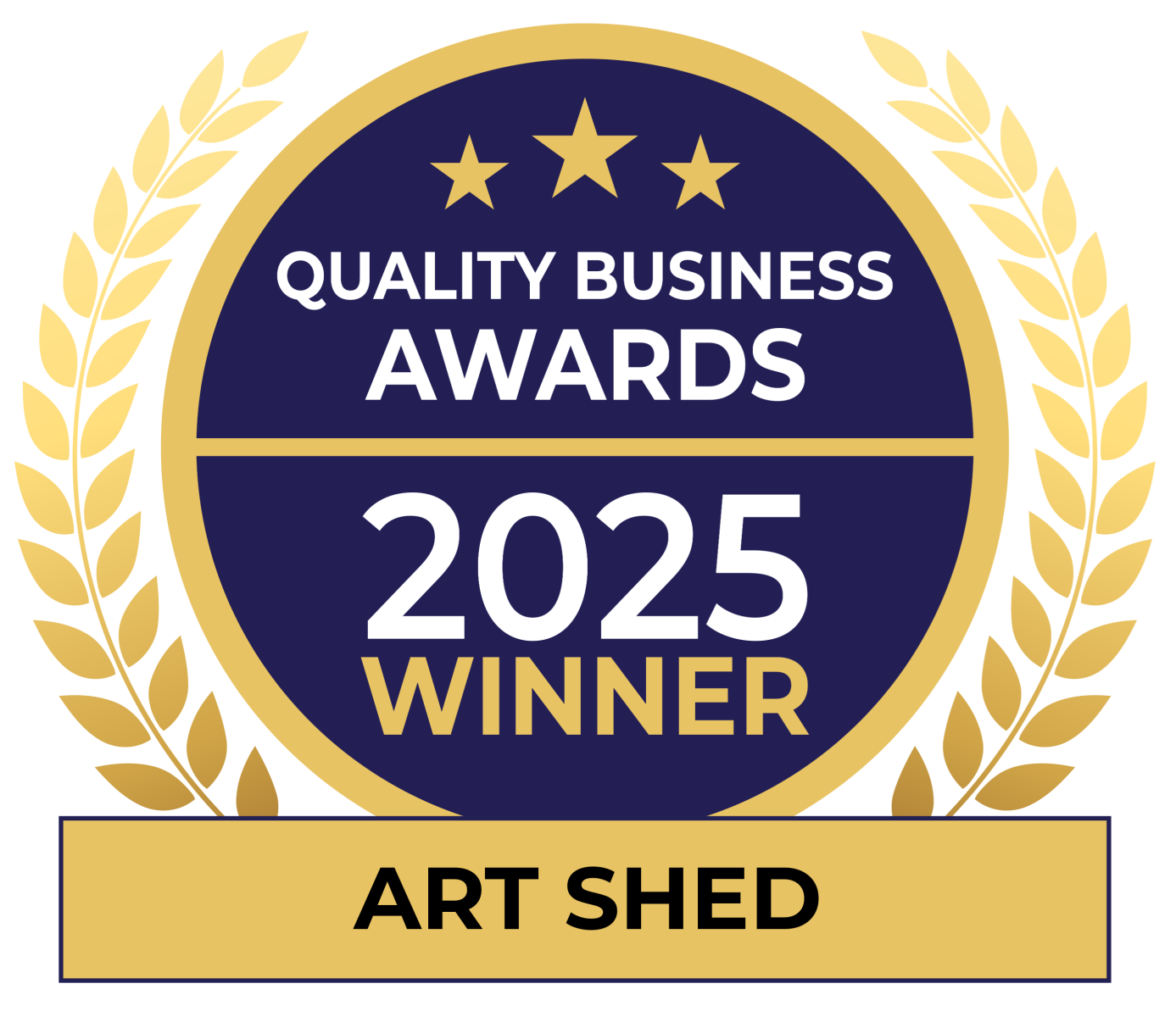A Guide to Choosing the Right Paint Brush
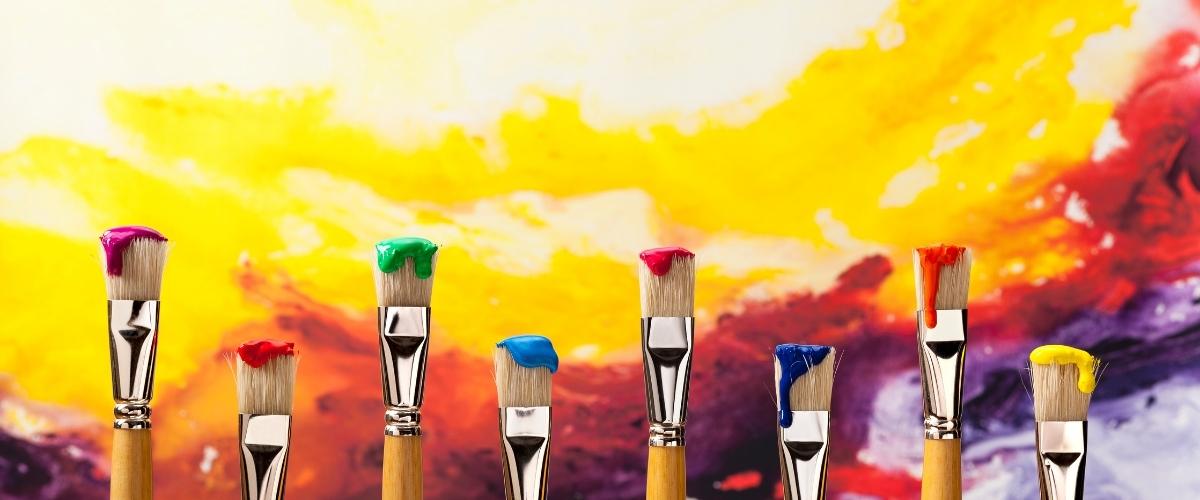
An artist’s paintbrush is a vital tool in their kit. It enables you to put paint on canvas and turn your creative thoughts and ideas into visual masterpieces.
A paintbrush becomes an extension of one’s hand so it’s important to find a comfortable fit for you and the right one for the job.
When face-to-face with that brush display in a shop, and seeing the vast amount of variety available it can be a little daunting and difficult to know where to begin.
A one-size-fits-all approach doesn’t apply when it comes to painting brushes so we’re here to help you get all the info before finding your snug fit and making that brush display a little less overwhelming.
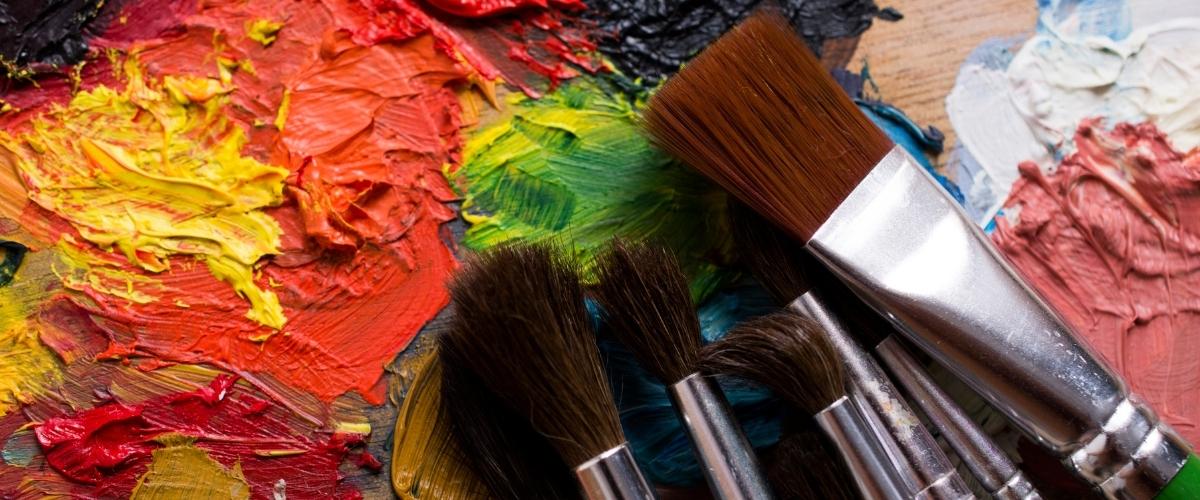
The Anatomy of a Brush
Let’s get back to basics to kick things off and run you through the fine physique of a paintbrush.
The anatomy of a brush is made up of 4 main parts: The bristles, the ferrule, the crimp and the handle. Here’s a simple breakdown of each body part and the purpose it serves:
- Bristles: The bristles of a brush can be made up of natural or synthetic hairs and occasionally, a combination of both. These are broken down into three main parts: the toe, belly and heel. The toe at the tip, the belly in the middle for holding the paint (much like ours holds a bowl full of pasta) and the heel at the base.
- Ferrule: Usually metal, the ferrule connects the bristles to the handle and holds everyone together nicely and securely.
- Crimp: The crimp is part of the ferrule that secures it to the handle.
- Handle: Made from sturdy, solid materials like wood or acrylic, the handle is the portion of the brush you hold onto and wield. Handles often feature a number on them; this can indicate the thickness and width of the bristles or the size and length of the handle. These numbers vary depending on the brand and manufacturer.
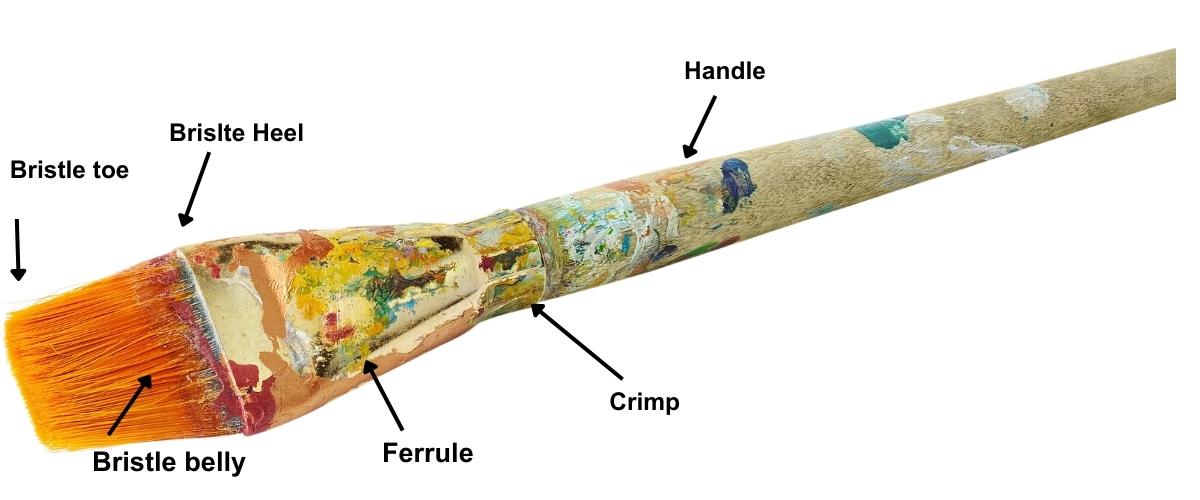
Different Brush Shapes
Like our little bodies, brushes come in a range of different shapes and sizes and each is suited to different mediums and jobs. Here’s a quick guideline to reference when choosing the right shape for you:

Different Bristle Types
Now that we’ve got our brush jargon and shapes down pat, let’s run through the different types of bristles you can get and what they’re best used for.
Synthetic/Taklon
A common name for a synthetic fibre brush, Taklon is an alternative to animal hair.
Taklon is a great way to go if you’re a little more environmentally conscious as it is considered the greener and more vegan option.
Its sustainable ways, however, do not hinder its ability; it is designed to mimic the look, feels and function of natural bristle brushes.
It does an excellent job at faking it and we sure think it’s made it!
Taklon is a great all-rounder and works well with a bunch of different paints like watercolour, inks, acrylic and oil.
Depending on your paint choice, Taklon bristles do differ slightly. Taklon for acrylics like our range of Mont Marte Artist Acrylic Taklon brushes and Mont Marte Abstract Taklon brushes have soft bristles for seamless paint application, perfect for detailed work or background painting.
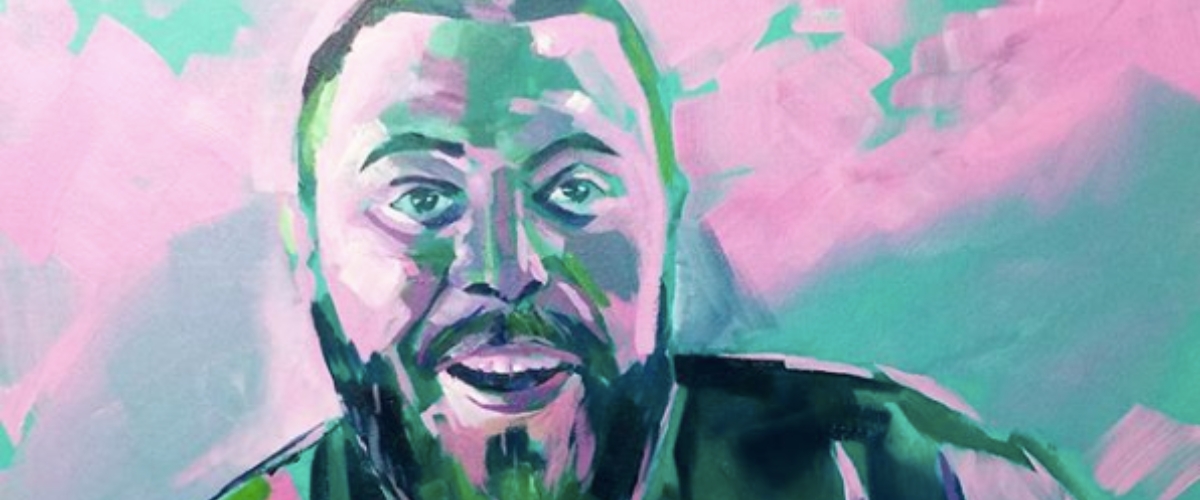
*Click Here to watch how Art Shed Tom paints this acrylic portrait using the Mont Marte Abstract Expression Brushes
Taklon for oil on the other hand, like our Mont Marte Artist Oil Taklon brushes, have thicker and more coarse bristles that are great for oil application as they hold and deliver buttery or thick paint well.
When it comes to working with Taklon for watercolour, it joins forces with natural pony hair bristles in our Mont Marte Artist Watercolour brushes.
The dense fibres of the pony hair bristles create a large belly that enables you to pick up a lot of paint and water whilst the Taklon bristles keep the brush soft creating smooth and even strokes.
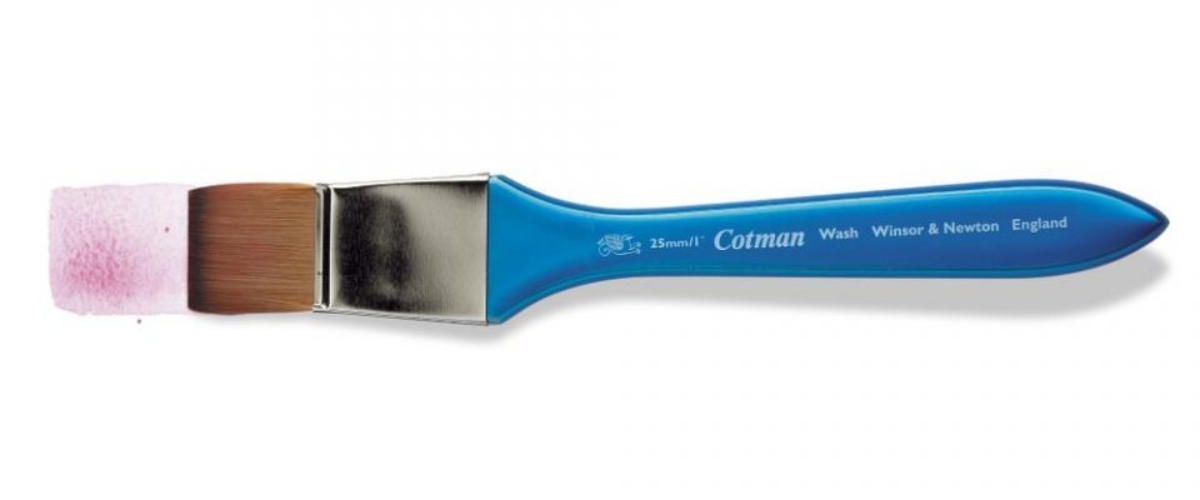
At the top tier of our synthetic range is the ever-popular Winsor & Newton Cotman brush collection.
These stunning brushes feature fibres of differing thicknesses to achieve the best results. The thicker fibres give the brush strength and spring whilst the thinner fibres improve colour-carrying capacity.
These smooth and densely-packed fibres are suited best to watercolour works and retain their shape and point for years to come.
Other Synthetic Brush Lines: Unipro Natural and Synthetic Blend Craft Brush, Unipro Smooth Coat Brush, Mont Marte Studio Series Paint Brush Set
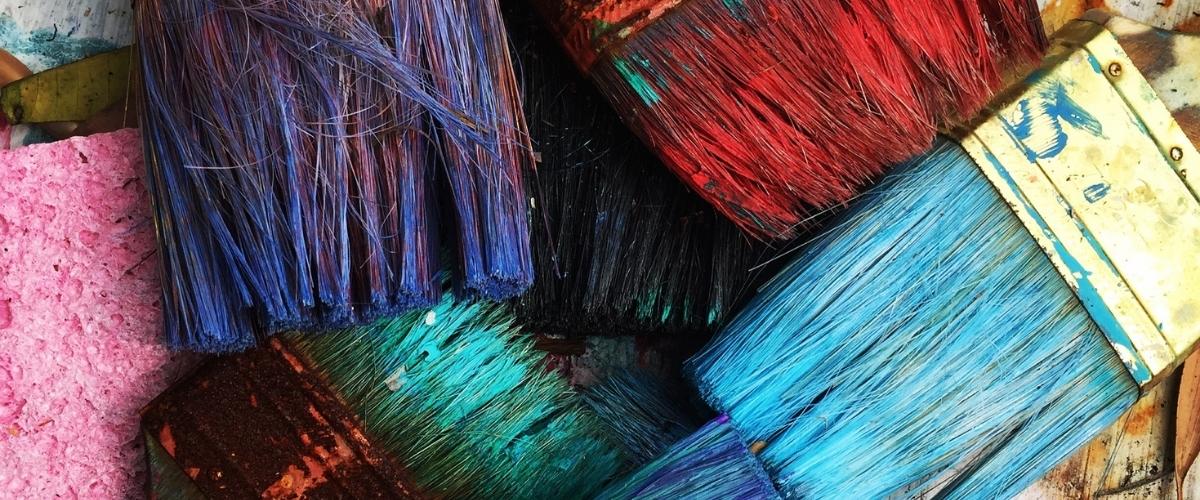
Hog Bristle
As the name suggests, our next contender is a natural fibre bristle from the hog.
The naturally stiff and dense hairs of the hog bristle lend themselves to working with thick buttery paints like oils.
The end of each bristle is naturally split into two or three at the tip called flags. These flags allow for greater paint retention and a smoother paint application.
The stiffness of the hog bristles is also great for techniques like impasto as you can lay the paint down in thick, textured layers.
Hog bristles are also suitable for dense acrylics when you want to apply generous amounts of paint to achieve texture.
Our Monte Marte Artist Hog Bristle brushes are an excellent example of this heavy-duty, built-to-last brush. Go the whole hog with the Mont Marte 11-piece Hog Oil Brush Wallet. The perfect oil painting intro set for the travelling artist!
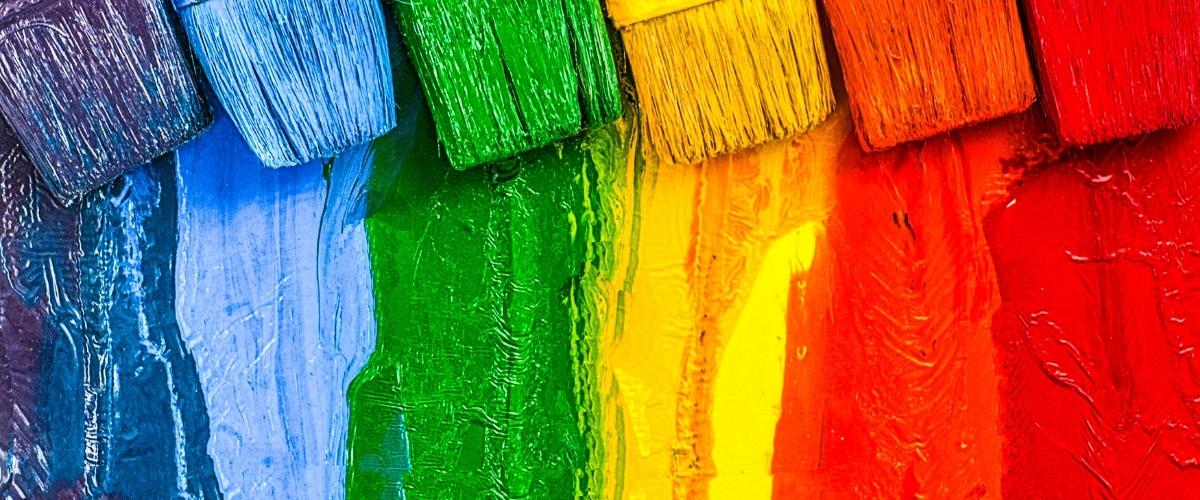
Other Hog brush lines: Mont Marte Silver Series Stencil Brushes, Mont Marte Gallery Series Brush Set, Mont Marte Long Handle Gesso, Mont Marte Studio Series Brush Set, Mont Marte Artist Chungking
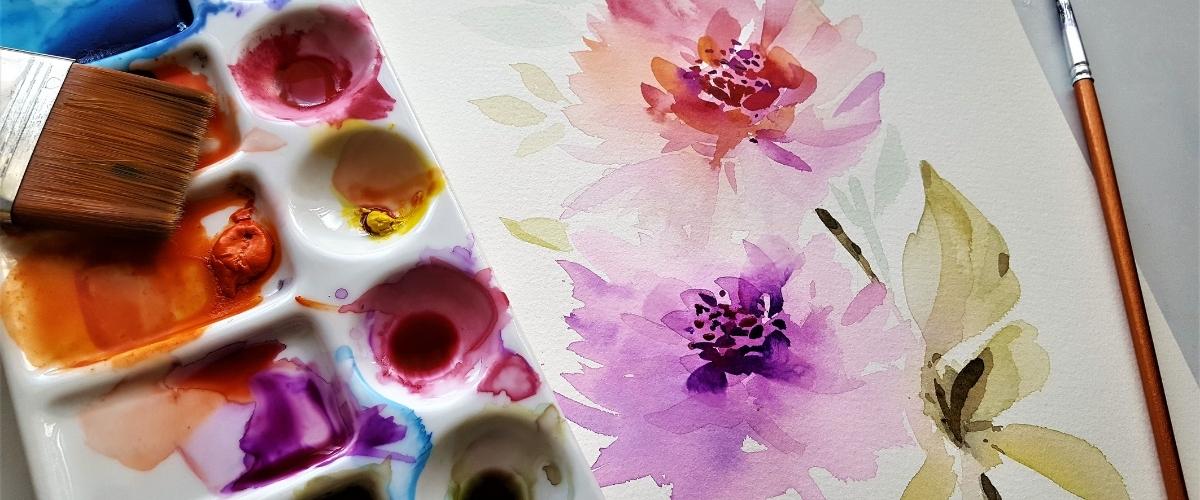
Sable Brushes
Sable brushes are made from natural animal hairs usually from soft-haired animals such as weasels or minks.
The soft and gentle ways of the Sable brush are best suited to fluid watercolour works as the densely-packed bristles hold great amounts of paint and water in their belly and the smooth bristles make for even brush strokes.
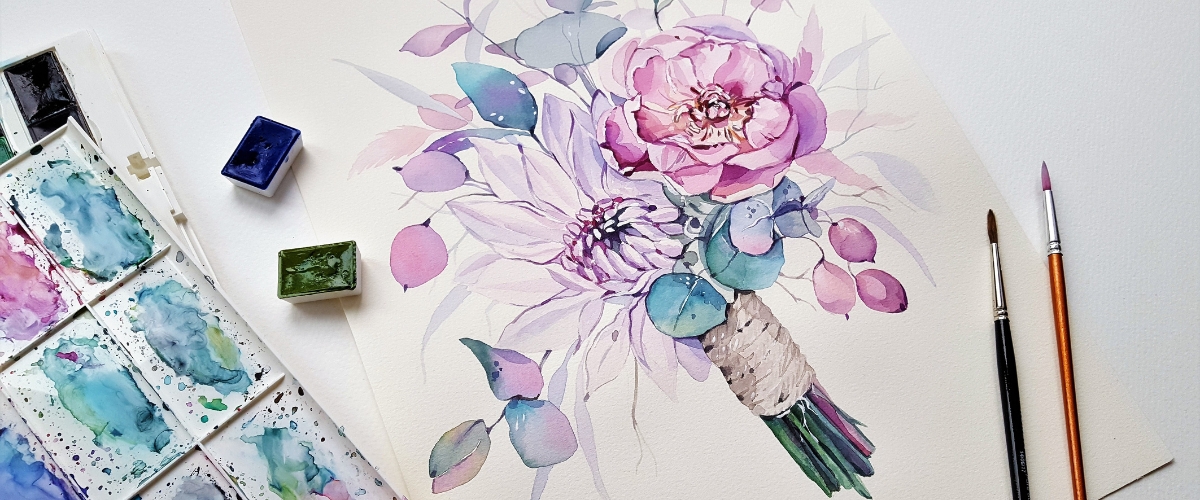
The ultra-fine bristles are soft and springy and will retain their shape and point even after years of use.
Goat Hair
Used traditionally in Japanese art, goat hair brushes are soft without spring making them ideal for soft blending of watercolours, creating washes, varnishing and adding glazes streak free.
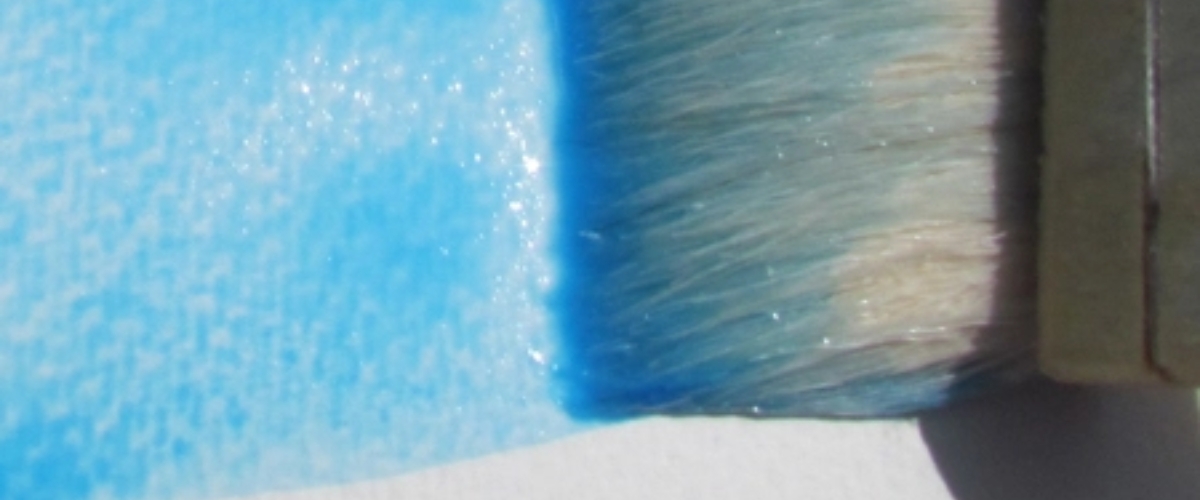
Our Mont Marte Pine Wood Goat brushes come in a range of different sizes to pick whichever floats your goat!
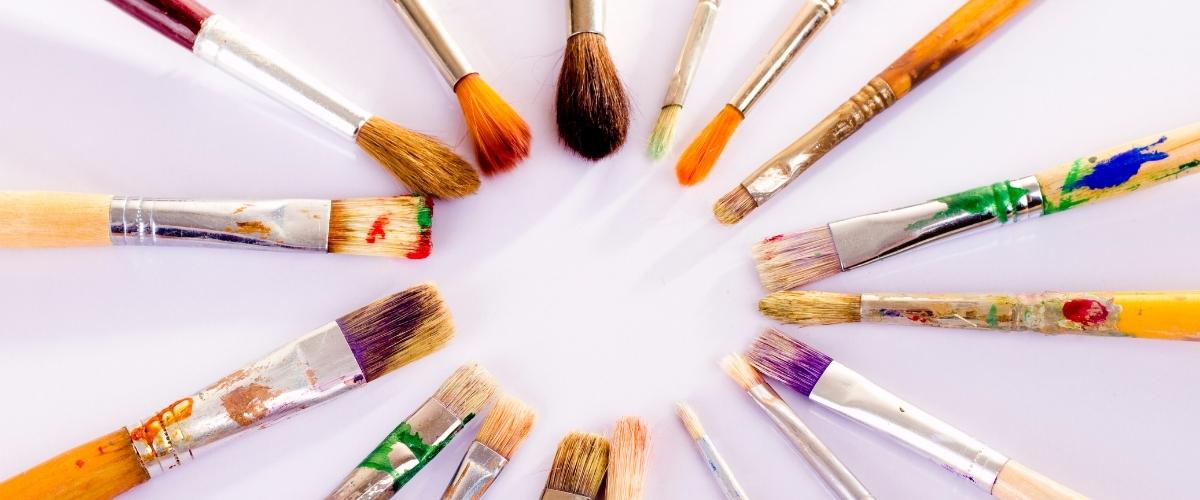
Brush Care Tips
After you’ve found your perfect brush matches it’s important to look after them because like us, for a longer and better quality of life, brushes need to stay in shape too.
They say a bad workman blames their tools; we think a great artist worships theirs. So, if you show your brushes a little TLC they will serve you well for many years to come.
Here are our top tips for keeping your brushes looking and performing at their best:
- 1. Don’t let the paint dry. After use, it’s important not to let paint dry or cake on your brushes as it will ruin the fine bristle fibres. It’s important to clean each brush well after every, single, use.
- 2. Which brings us to tip numero due – Invest in a good brush cleaner. Because for your precious brushes, Palmolive and water just ain’t gonna cut it. We carry a great range of brush cleaners like Chroma Incredible Brush Cleaner, Matisse Brush and Hand Cleaner, Art Spectrum Brush and Hand Cleaner plus many more! These cleaners are excellent at removing stubborn thick paint without damaging your brushes.
- 3. Avoid leaving them in water. If you leave your brushes sitting in water for extended periods of time they will, in time, fray, warp and bend, losing their beautiful shapes and eventually causing their ferrules to rust.
- 4. Lay them down to rest. Once your brushes are nice and clean lay them flat and horizontally to dry. This ensures no water runs down into the ferrule or handle of your brush and there is no pressure on your bristles.
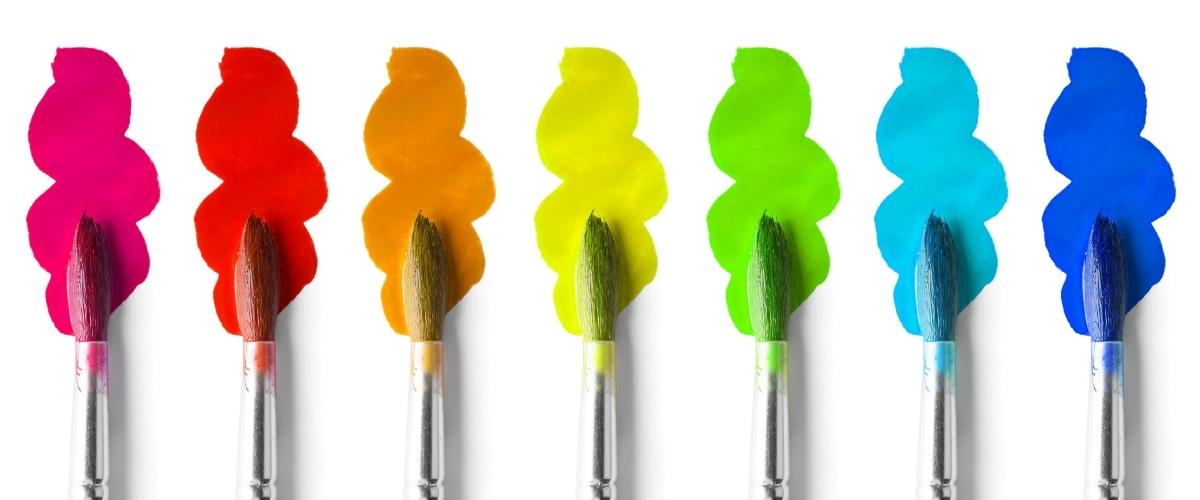
A paintbrush is like an artist’s magic wand so finding the right fit is very personal, however, we hope with our intel and tips we have made the process a little less daunting. If you’d like a little more help or understanding you can visit us in-store; our friendly team are always happy to help!
As always, art is about enjoyment so get experimenting and have some fun with it. If you create anything from our blog tutorials don’t forget to upload photos of your masterpieces to social media and tag us, we love seeing what you guys create.
If you have any topics you’d like to learn more about drop us a line with some blog suggestions.
Plus, don’t forget you can watch video tutorials on our YouTube channel https://www.youtube.com/user/artshedonline.
Happy creating!
F | @artshedonline I | @artshedonline
.jpg)
Comments (3)
which is the best brush
By: Erika white on 28 May 2022what is the best brush to create clouds
Art Shed Online Response
Hi Erika! Fan brushes are great for creating clouds. We also have another blog that teaches you how to paint clouds here: https://www.artshedonline.com.au/blog/art-shed-blog/oil-painting/how-to-paint-clouds-using-oil-paint/
You guys are AWESOME
By: Susana Nobio on 15 November 2020I want to sincerely thank you for all the detailed information about brushes and acrylinc paint. I learned to much today!
Guide to Brush types
By: Evelyn Poole on 13 April 2019Excellent information for me. Thanks you
